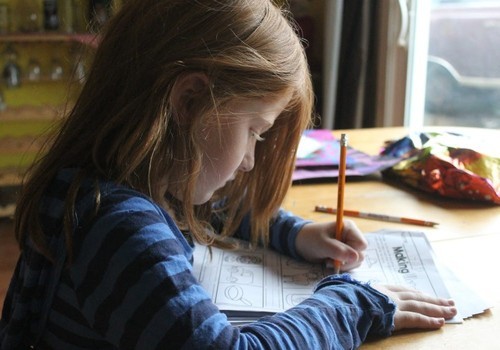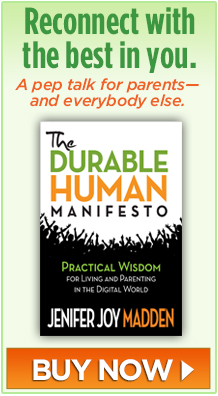
So your child has been clamoring for months, if not years, and you’re still not sure it’s the right time for that first mobile device. You are wise to think it over carefully because a phone has more strings attached than the most sought-after pair of sneakers.
For some kids, a phone is needed at an early age to keep in touch as they transfer between caregivers. But if your child is always under the watchful eye of an adult (at home, on the bus, or in school), having a phone may be more of a want than a need.
To determine if you and your child are ready for this life-changing milestone, ask yourself these questions:
Does my child really know herself?
The early pre-digital years–when a child is still technically wild and completely unplugged–is the only time in life when she can spend full time sensing the world and discovering her unique powers as a human animal. This is the time when she learns the capabilities of her own body and mind. By the time kids get to elementary school, new research shows that many don’t have a good sense of balance, direction, or even their own strength. As it says in The Durable Human Manifesto, “if kids spend too much time with technology too soon, they may never fully establish their own operating systems and understand what makes themselves tick.”
Is my child ready to step up?
What parents may not realize until too late is that giving a child a phone ends the simplicity of childhood. A child will never skip as high with a phone in his pocket. He’ll be forever saddled with adult-like responsibilities such as keeping an expensive and delicate object charged and out of the toilet. Take a look at whether he is handling responsibility in other aspects of his life. Consider having him earn the right to have a phone by showing that he can be ready on time, do chores, etc.
Am I ready to rock the family boat?
Once a child has a cellphone, it permanently changes the family balance of power. Life becomes a lot more complicated because he will begin to operate outside your oversight. Even if you use monitoring tools, it’s much harder to keep track of your child’s social life, whether offline or on. If you don’t feel comfortable dropping off your child alone at a shopping mall, he is not ready for a full-scale smartphone.
A full-fledged smartphone is extremely powerful and definitely not kid-friendly. Giving one is akin to handing over the keys to a Maserati when all your child can handle is a bike with training wheels.
A vastly simplified but slick device is Gabb Basic. It allows kids to call, text, and use a calendar, alarm and calculator. What they can’t do is get on the Internet, play games, use social media, shop in app stores, send picture messages, or group text.
If you decide to hold off giving a phone, it gives you and your child more time to prepare for your child to skillfully enter the digital world. In the interim, I suggest two books. Screenwise, Helping Kids Survive (and Thrive) in Their Digital World by Devorah Heitman, has excellent advice for you (as your child’s technology mentor) about how to bring up a good digital citizen who knows how to navigate online as well as to be a good friend in real life. The second title is Balanced and Barefoot: How Unrestricted Outdoor Play Makes for Strong, Confident, and Capable Children by Angela Hanscom, which explains how to instill the non-tech skills your child needs to become a durable, self-reliant adult.
To teach life balance in general, it’s also a good idea to sit down with each of your kids to plan out a balanced day using the American Academy of Pediatrics new Media Time Calculator. It pre-populates with the recommended amount of sleep and physical activity so media use is put into perspective with all your child’s needs over a 24-hour day. Here’s a 3 minute demo:
Also, to help the whole family stay connected as they learn better tech management habits, take the Durable Family Pledge. Family members choose five life-balance habits to try over 4-week period. Long enough that they just might stick.
Download the Durable Family Pledge for FREE:
For more information and inspiration for raising active, engaged kids who know their way around the natural and digital worlds, also check out How To Be a Durable Human: Revive and Thrive in the Digital Age Through the Power of Self-Design. Each practical chapter includes a special section just for parents.
Learn about more about this author on Google+.
This post was revised in December, 2019




excellent so true